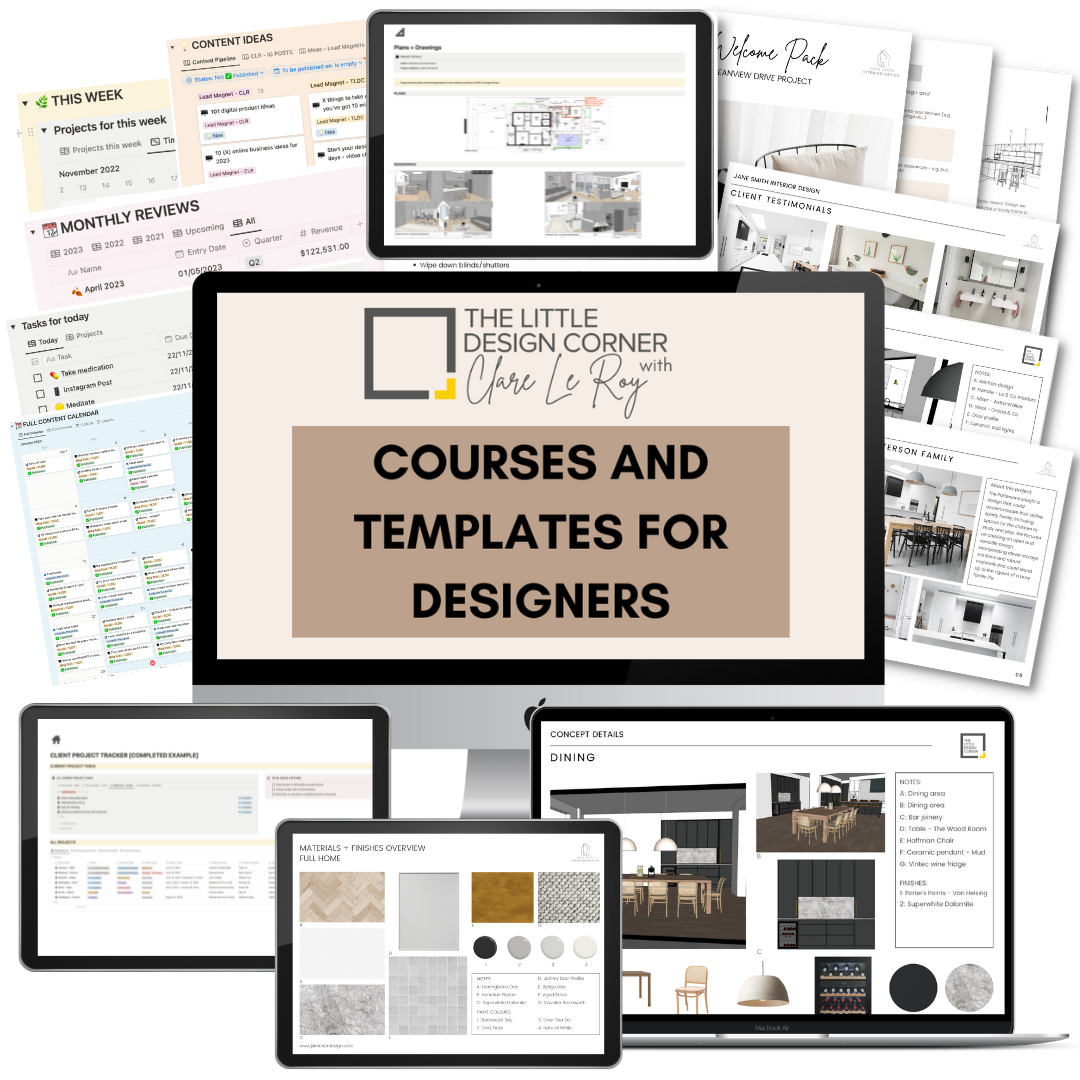8 challenges you'll face when working with design clients
Let’s be honest, our job as a designer would be SO much easier without clients 🤣😜 Just kidding (sort of!)
The reality is that we obviously need clients in order to run our businesses and make money - so we have to find a way to work with them!
And of course some clients are an absolute dream - those are the clients you just get on with, they always pay on time, they are decisive and flexible in their decision making and they don’t fly off the handle about every little thing.
But for all those dream clients you’ll also come across clients that are challenging to work with.
And in this post I share 8 challenges you’ll almost certainly experience at some point in your design career.
I also share some ideas for what might help you overcome each of these challenges when you face them.
1: Managing client expectations
Aligning a client's vision with their budget and ensuring they have realistic expectations for project outcomes.
What might help:
Strong client leadership
Encourage them to be open and honest with you about their budget (by building trust and rapport)
Establish clear project goals and outcomes upfront via a scope of work
Explain the design process, constraints and tradeoffs to help them understand what is and isn't possible within their budget/timeline
2: Communication
Establishing clear, ongoing communication with clients to address concerns and provide updates (so you avoid the Sunday afternoon "urgent" text messages!!)
What might help:
Send them a 'Client Welcome Pack' that outlines your preferred communication approach and the way you will communicate with them throughout the project (you can get my template HERE if you need)
Provide regular, proactive updates like The Friday Email (I have a free template for this in my business course platform if you need)
Over communicate so they are never left wondering what is happening
3: Handling difficult clients
Dealing with demanding or indecisive clients, or those with unclear or constantly changing their minds.
What might help:
Set boundaries and maintain professionalism - e.g. address any in appropriate behaviour or unrealistic demands immediately
Have clear clauses in your contract about how many changes you will make to your designs and how you work
Give yourself permission to get rid of difficult clients if they are driving you mad and you can't make them happy (this is your business and you get to choose who you work with!)
4: Resolving conflicts
Addressing disagreements between your vision and the clients' preferences or mediating conflicts between clients (e.g. married couples!!!)
What might help:
Offer solutions and compromises to help clients reach a consensus or find a middle ground
Develop mediation and negotiation skills to facilitate constructive discussions and guide clients towards a resolution
Accept the fact that you partly play the role of marriage counsellor when you work with couples LOL (if only it were funny!!!)
5: Protecting intellectual property
Ensuring credit is given for design work, preventing unauthorised use of designs and navigating disputes over creative ownership.
What might help:
Have a well drafted contract that clearly outlines ownership of designs (don't DIY your legal work, get this put together by a lawyer).
Inform clients about copyright laws and the importance of crediting you for your work. This will help to foster mutual respect.
6: Emotional attachment
Some clients have strong emotional connections to certain design elements or possessions, making it challenging to propose changes.
What might help:
Incorporate sentimental elements into your designs and find creative ways to strike a balance between functionality, aesthetics and sentimentality
Don't take on a project if you feel that the client is attached to too many things that are misaligned with your way of working or will compromise your design (as it can be hard to make clients like this happy, trust me!)
7: Misalignment of 'taste'
Some clients will have aesthetics and 'taste' that is very different to your own. It can be hard to make these sorts of clients happy if your aesthetics are misaligned.
What might help:
Your role as an interior designer is to cater to your clients' needs and desires, even if their taste differs from your own.
However, if you feel you can't design to their taste or won't be able to make them happy then don't take on the project. It's better to find clients who want designs that are aligned with your style and who you can make happy!!
I always made sure prospective clients had seen my previous design work and liked it. If it wasn't their style I generally didn't take them on as clients
8: Handling payment disputes
Ensuring timely payment for services rendered and addressing any payment disputes or financial disagreements with clients can be uncomfortable.
What might help:
Ensure your client agreement or contract outlines payment terms, schedules and dispute resolution mechanisms to minimise potential conflicts.
Reinforce this information in your Client Welcome Pack (and include a payment schedule for the project so this is clear)
Never start any work without at least partial up-front payment (e.g. 50% up front for a phase of work is quite normal)
Take pre-payment for initial design consultations to avoid awkward payment discussions during your first meeting.
Thanks for reading and catch you in my next post :)
Clare x
Dr Clare Le Roy
Courses and Templates for Designers and Architects
DO YOU WANT TO….
Improve your professionalism?
Find more clients?
Bring in more revenue?
Create better systems and processes?
Then check out my business courses and templates for designers and architects.
These courses and templates leave you with work done - not just a long list of things you need to do next. We have a really strong focus on taking action and getting things created that improve your business.








